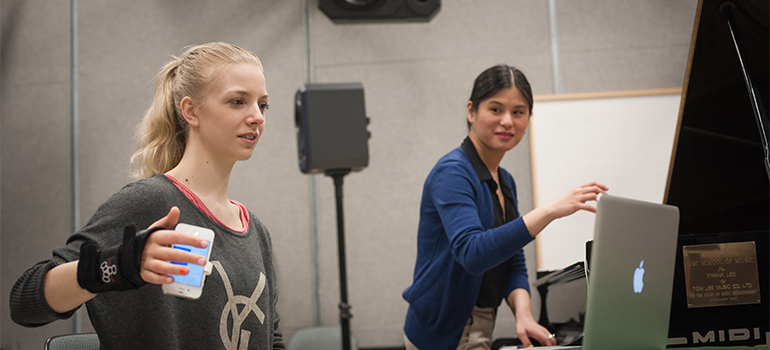Using body movements as digital-music controllers
April 10, 2014

Pieteke MacMahon using an iPhone Piano app to control digital music (credit: Martin Dee)
Performers in the UBC Laptop Orchestra at the University of British Columbia use body movements to trigger programmed synthetic instruments or modify the sound of their live instruments in real time.
They strap motion sensors to their bodies and instruments, play wearable iPhone instruments, and swing Nintendo Wii or PlayStation Move controllers while Kinect video cameras track their movements.
Besides creating their powerful music, the students have invented a series of interfaces and musical gadgets. The first is the Android sensorUDP app (iPhone version available), which transforms musicians’ smartphones into motion sensors and allows performers to layer up to eight programmable sounds and modify them by moving their phone.
Pieteke IPhone Sensor
Music student Pieteke MacMahon modified the app to create an iPhone piano, which she plays on her wrist, thanks to a mount created by engineering classmates. As she moves her hands up, the piano notes go up in pitch. When she drops her hands, the sound gets lower, and a delay effect increases if her palm faces up. “Audiences love how intuitive it is,” says the composition major. “It creates music in a way that really makes sense to people, and it looks pretty cool onstage.”
At a performance in Belgium, the ensemble’s dancer Diana Brownie wore a body suit covered with motion sensors as part of a University of Mons research project on body movement. The researchers plan to use the suit’s data to help record and preserve cultural folk dances.
Diana Brownie
The UBC Laptop Orchestra will perform a free public concert on April 10.
